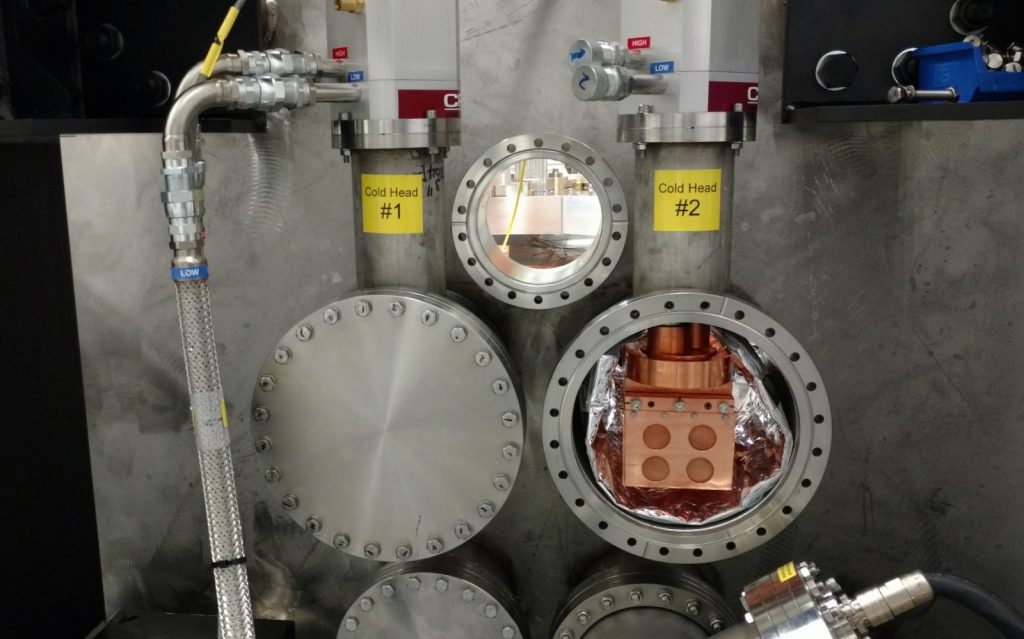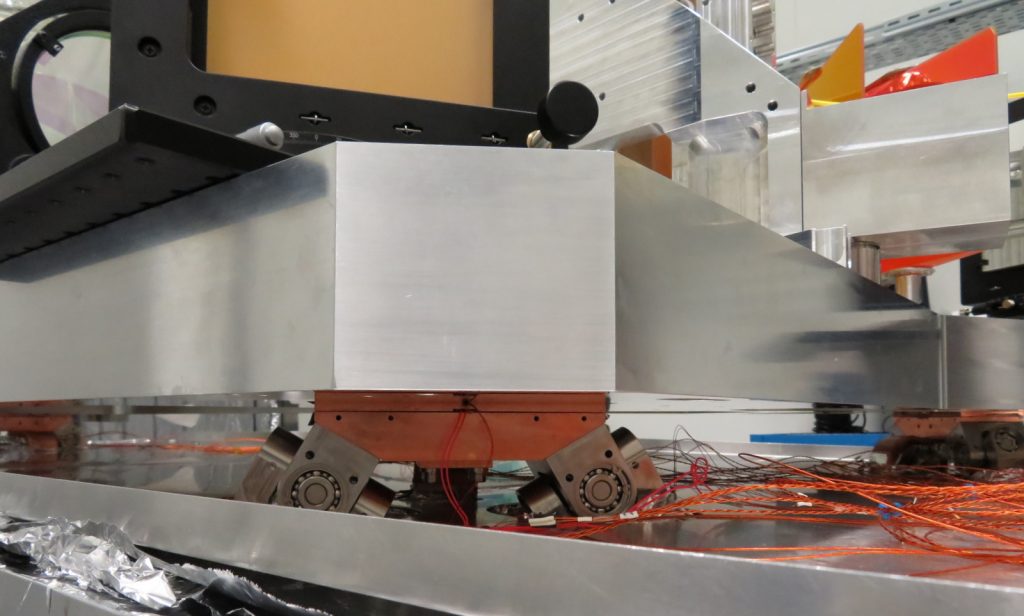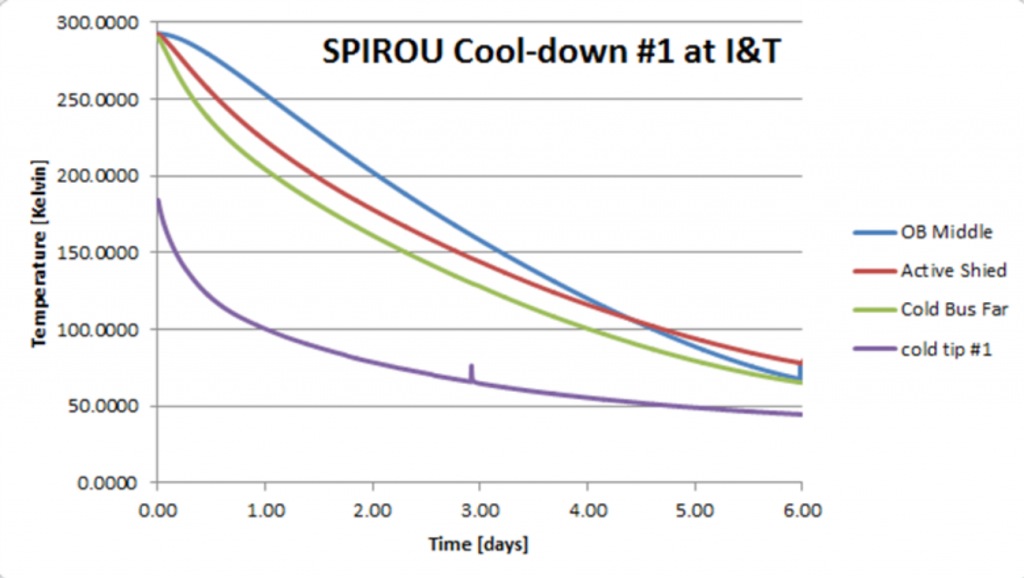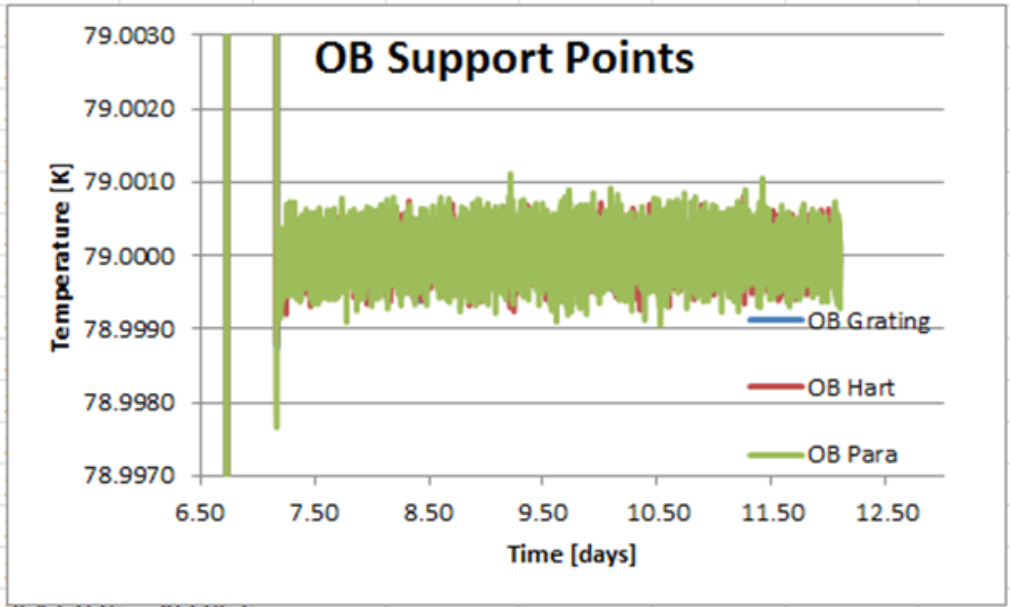2016 November: Validating the cryostat thermal stability at IRAP/OMP
The stringent requirement on the cryostat thermal stability was validated at IRAP/OMP
In order to meet the stringent SPIRou requirement in terms of radial velocity precision, the opto-mechanical structure of the cryogenic spectrograph must be thermally stable within 2 mK/day (with a goal of 1 mK/day) once cooled down at an average temperature of about 80 K.

To meet this requirement, we must (i) control the temperature of the cold optical bench to within the required precision, and (ii) reduce as much as possible heat exchange between the cold bench and the warm dewar enclosing the bench. To achieve this, we use a copper plate (cold bus) to cool down the optical bench, supported on three bipods whose heads are thermally stabilized to a precision better than 1 mK. High precision thermometers (ISOTECH MicroK) are used to secure this level of thermal precision, and make sure that it is not affected by changes in the electronics. The bipods linking the cold bench to the warm dewar are made of a material minimizing heat conduction between both, so as to reduce the potential impact of small changes in the warm dewar temperature onto the cold bench. To thermally isolate it even further, the cold bench is enclosed within an active radiation shield, thermally stabilized to a precision of better than 10 mK and featuring multiple layers of passive shielding both inside and outside the active layer.
The behaviour of the system and the thermal stability of the optical bench were validated in the IRAP / OMP clean room where SPIRou is currently installed. The first cooling cycle showed that the system was able to cool down to operating temperature and to exhibit the required temperature stability as measured at the centre and edge of the optical bench. This follow-up is carried out at IRAP/OMP by Leslie Saddlemyer from NRC-H (Victoria, Canada).

A new time lapse on the spectrograph cryo-mechanics full installation at the IRAP/P2IS plateform, in Toulouse.
(©S.Etcheverry – OMP)






